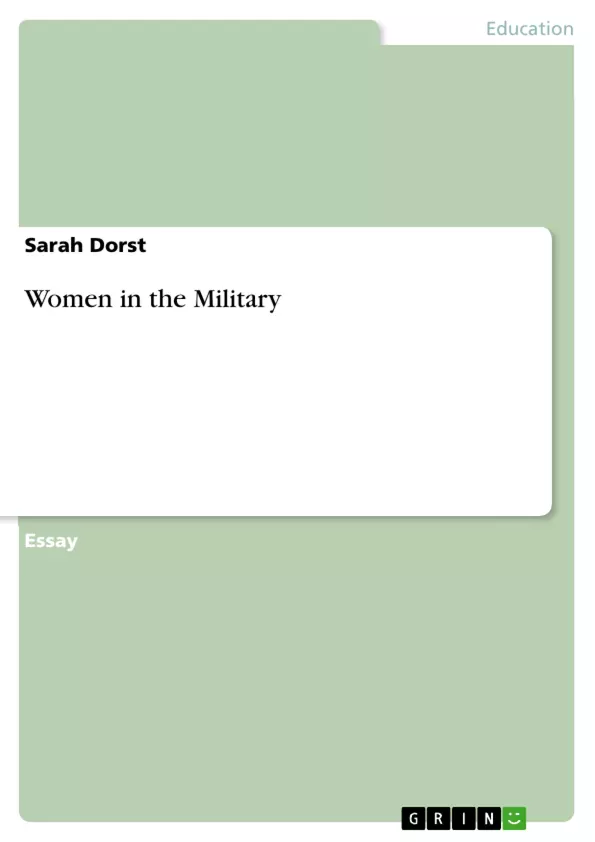There is a persistent lack of women in leadership positions with strikingly fewer women at higher officer ranks and in combat roles. In the United States and Canada for example, 15% and 17% of commissioned officers and 14% and 14% of non-commissioned officers are women. The accepted attitude is that if women could not run, they could not lead. Therefore women typically are accorded less respect and support than their male counterparts in the military.
Inhaltsverzeichnis (Table of Contents)
- Women in the Military
- The Outdated Definitions of Leadership
- Barriers Faced by Women in Business
- The Need for Something Beyond Legislation
- Stereotypes and Perceptions
- Women, Masculinity, and Leadership
- Attrition Rates and the Lack of Progress
- Self-Fulfilling Prophecies and Erroneous Assumptions
Zielsetzung und Themenschwerpunkte (Objectives and Key Themes)
The objective of this paper is to explore the lack of women in leadership positions within the military and corporate environments. This paper examines the historical and cultural factors that have contributed to this persistent disparity, as well as the ongoing challenges faced by women in these fields.
- Outdated definitions of leadership
- Gender stereotypes and their impact on leadership evaluations
- The influence of masculine environments on women's advancement
- The need for systemic change beyond legislation
- The importance of recognizing women's leadership potential and promoting diverse perspectives
Zusammenfassung der Kapitel (Chapter Summaries)
- Women in the Military: This section highlights the persistent underrepresentation of women in leadership roles within the military. It provides statistics on the low number of women in higher officer ranks and combat roles, illustrating the prevailing attitudes that often hinder their advancement.
- The Outdated Definitions of Leadership: This part examines the historical definitions of leadership that are rooted in physical prowess and masculinity. The paper argues that these outdated definitions are no longer relevant in the modern military, which increasingly demands soft skills and technological proficiency.
- Barriers Faced by Women in Business: This section draws parallels between the military and corporate environments, highlighting the persistent lack of women in leadership roles in both contexts. It discusses the barriers faced by women in business, including societal expectations and the challenges of balancing family responsibilities with career advancement.
- The Need for Something Beyond Legislation: This section addresses the limited effectiveness of legislation in promoting gender equality in organizations. It argues that changing attitudes and behaviors toward women is crucial for fostering true inclusivity and breaking down existing barriers.
- Stereotypes and Perceptions: This part delves into the impact of stereotypes and unconscious biases on leadership evaluations. It presents research showing how these biases can influence perceptions of women's capabilities, even in the presence of objective information.
- Women, Masculinity, and Leadership: This section explores the complex interplay between gender roles, masculinity, and leadership. It highlights how women often have to navigate a delicate balance between displaying masculine traits to be perceived as competent and avoiding being labeled as overly assertive or "unfeminine."
- Attrition Rates and the Lack of Progress: This section examines the high attrition rates among women in the military, suggesting a lack of support and opportunities for advancement. It argues that this trend is a significant indicator of the challenges women face in pursuing leadership roles within the armed forces.
Schlüsselwörter (Keywords)
This paper focuses on the underrepresentation of women in leadership positions within the military and corporate environments. Key terms include: gender equality, leadership, stereotypes, masculinity, organizational culture, diversity, inclusion, unconscious bias, and self-fulfilling prophecies.
- Citar trabajo
- B.Sc. (Bachelor of Science) Sarah Dorst (Autor), 2009, Women in the Military, Múnich, GRIN Verlag, https://www.grin.com/document/174092



